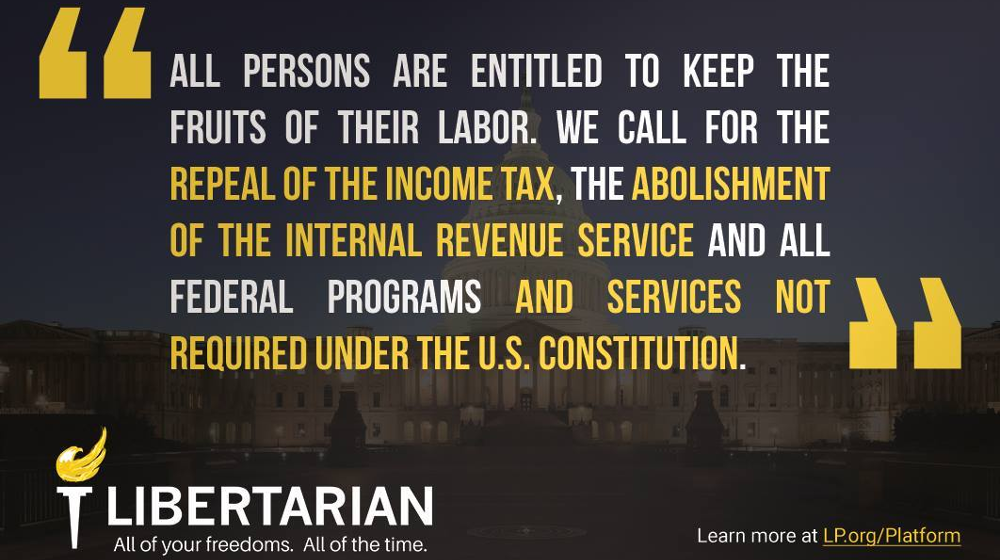As of midnight on the evening of Jan. 19, Congress failed to pass a continuing resolution that would have kept the federal government open, then on the third day of the shutdown the Senate voted to pass a bill that would fund the government for the next three weeks. The political theater that surrounds the federal government shutdown has ended, at least temporarily, but a strong lesson remains: It’s easy to go without most federal government services.
“Previous government shutdowns have demonstrated just how little we need the federal government, particularly federal discretionary spending — which is all that Congress was debating,” said Libertarian National Committee Press Secretary Richard Fields. “There have been 18 shutdowns since the Congressional Budget Act passed in 1974. The longest shutdown, for one month from Dec. 5, 1995, to Jan. 6, 1996, had little lasting impact, economic or otherwise.”
Federal government “shutdowns” affect only discretionary spending, which is about one third of federal outlays. Non-discretionary spending — Social Security, Medicare and other health insurance programs, welfare, and interest on the federal debt — continues unabated. A good chunk of discretionary spending, including most expenditures for the military, the post office, air traffic control, etc., also continues. The trash won’t be collected at national parks. Several hundred thousand non-essential federal employees will ultimately get extra paid vacation days, although they will have to wait until after the shutdown ends to get their paychecks.
It’s worth asking why we have non-essential federal employees on the payroll in the first place. Stock market value may help gauge just how unimportant non-essential government services actually are. While Democrats and Republicans were jockeying over who would get blamed for a shutdown, the S&P 500 and all the other major stock indices closed up for the day on Friday.
Here is how the process is supposed to work. The House and the Senate are each supposed to pass budget resolutions prior to the Oct. 1 start of the federal fiscal year. The resolutions go to a reconciliation committee to iron out their differences, and then the final budget goes back to each chamber where it passes with a 50 percent approval. The 60-vote filibuster rule in the Senate does not apply. With all three branches of government held by a single-party majority, the budget could have been passed on time and signed by the president last October with no last-minute drama. Tellingly, the process has worked that way only four times in the past four decades, the last time in 1997.
The continuing resolution passed by the House included an extension of spending for the Children’s Health Insurance Program (CHIP) as bait for Democratic Senate votes. The Democrats, however, also wanted a path to residency and citizenship for beneficiaries of the Development, Relief, and Education for Alien Minors (DREAM) Act now that Deferred Action for Childhood Arrivals (DACA) deportation protections have been eliminated by the Donald Trump administration. The CHIP extension and further delay of Obamacare taxes will add $30 billion to the federal deficit.
“So much for Republican rhetoric about reducing deficits,” Fields said. “Republicans talk a good game about reducing government spending and deficits, but they almost never manage to walk the walk. Gallup polling indicates that about 27 percent of the American electorate can be characterized as libertarian. That compares to 26 percent conservative, 23 percent liberal, and 15 percent populist. The primary obstacle that keeps electoral results from reflecting this sentiment is the fear-based campaigning used by both Democrats and Republicans.”
The 2016 presidential campaigns, and even congressional campaigns, were categorized by fear of what might happen if the other party gained power. Democrats used fear of Donald Trump and Republicans used fear of Hillary Clinton to keep voters within the grasp of the Democratic and Republican parties.
“Democrats and Republicans differ little in substance,” Fields said. “Both parties champion foreign interventionist wars and an inflated military to engage in them. Both parties colluded to renew Section 702 of the Foreign Intelligence Surveillance Act (FISA), which authorizes warrantless searches of Americans’ email, text messages, phone calls, and social media usage. Both parties fail to address the imminent funding problems of Social Security and Medicare. Both parties relentlessly increase government spending and deficits. Only Libertarians can be counted upon to counter those policies. To that end, the Libertarian Party plans to field more than 2000 candidates for local, state, and federal office this election year.”

